ESC1: Circular Dichroism: best practice and data analysis
Dates: 3rd-5th November 2021
Location: Aarhus University, Denmark (AU-SRCD)
Full address: ISA, Department of Physics & Astronomy, Aarhus University, Ny Munkegade 120, 8000 Aarhus C, Denmark
Number of participants: 10
It is no longer possible to apply for this course.
Description of the course:
Circular dichroism (CD) spectrometers are common in many biophysical characterisation laboratories. This short course focuses on the optimum use of these instruments. CD measures the difference in absorption between left and right handed circularly polarized light of chiral samples. CD measurements in the far ultraviolet spectral range is used to study folding of peptides, proteins, oligo-nucleotides and DNA. Of particular interest is CD spectroscopy of proteins and peptides, where the secondary structure can be determined and changes followed with e.g. ligand binding, temperature, salinity etc.
During the course we will discuss protein sample optimization in terms of buffers, concentrations, solvents and ionic strengths. Best practice for CD measurement including instrumental calibration, testing, performance and spectrum quality will be reviewed, and analysis of CD spectra for secondary structure determination is demonstrated. Hands on measurement and analysis is carried out at the CD facilities at the synchrotron radiation source ASTRID2.
Outline of the course:
The course will start midday on Wednesday the 3rd and end midday Friday the 5th.
Day 1:
Lunch including round table introduction of participants and hosts as well as to ASTRID2 and its SRCD facilities.
Tour of the facilities.
Lecture 1: Introduction to CD spectroscopy: Principles and information content
Lecture 2: Instrumentation: what is inside a CD instrument and what do the measured signals mean?
Day 2:
Hands on in teams of 5 participants
- Practical introduction to CD measurement, the first spectrum
- Buffer limitations study (UV-VIS spectrometer)
Lunch
Lecture 3: Doing it wrong: what are common mistakes?
Lecture 4: Secondary structure calculations. How to do it and understand the limits
Hands on in teams of 5 participants
- Measure CD spectra of proteins in the wrong and the right way
- Secondary structure calculations
Day 3:
Lecture 5: The difficult measurement. What are the limits and how to push them?
Lecture 6: Examples of non-protein CD studies
Hands on in teams of 5 participants
- A difficult sample
- Cell pathlength determination
Lunch, questions and goodbye.
Other details:
Participants will receive partial financial support to attend the course, including economy travel, lunches and 2 nights of accommodation with breakfast (accommodation will be booked by the organisers). Successful applicants will be informed of the eligible expenses when they receive a formal acceptance letter.
Download a pdf version of a poster for this course here.
First MOSBRI course on Circular Dichroism held at Aarhus University, Denmark in November 2021
10 participants from 6 countries – Belgium, France, Slovenia, Czech Republic, Hungary, and Portugal – attended the first MOSBRI End User Short Course (ESC1) on Circular Dichroism (CD) spectroscopy at Aarhus University, Denmark.
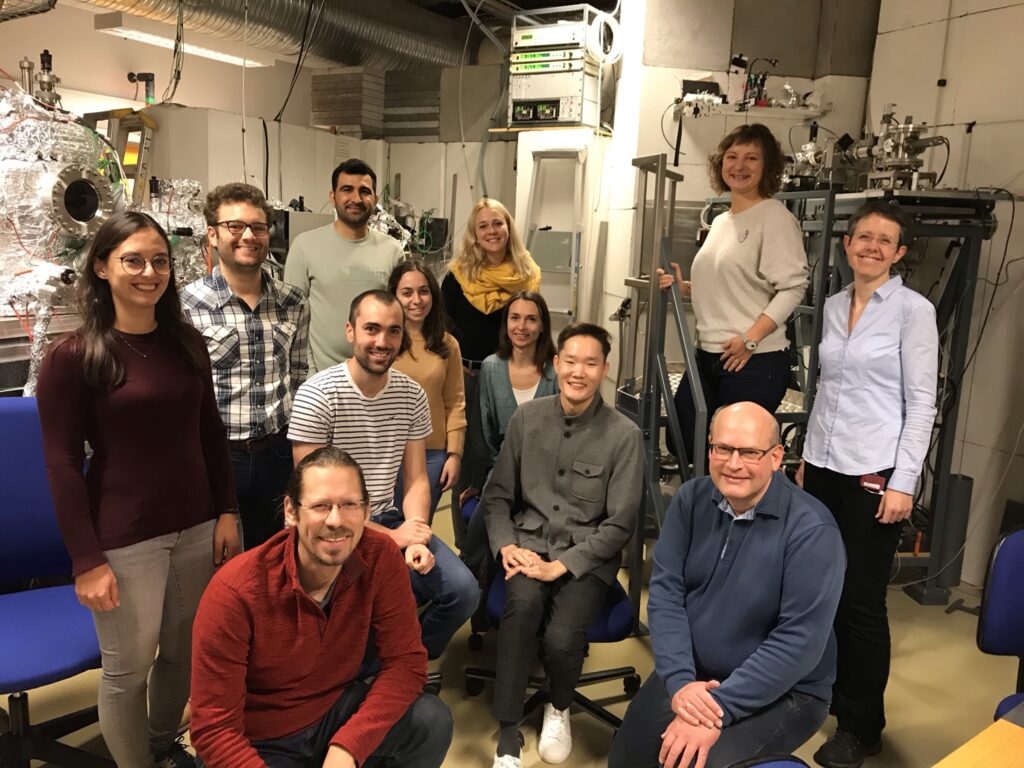
The course was hosted by Søren Vrønning Hoffmann and Nykola C. Jones, spanned three days and covered topics such as the basics of CD, CD instrumentation, secondary structure determination, how to do CD measurements correctly, non-protein CD, and CD on difficult samples. The course included several hands-on sessions on the CD beam line at the synchrotron radiation source ASTRID2 located at Aarhus University. All lecture presentations are available for download on this course page.
Course material
The following presentations were given as part of the course.
Lecture 1 – Introduction to CD spectroscopy:
Principles and information content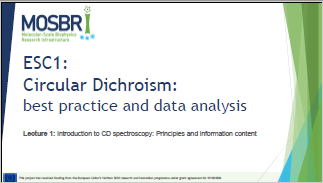
Lecture 2 – Instrumentation: what is inside a
CD instrument and what do the measured signals mean?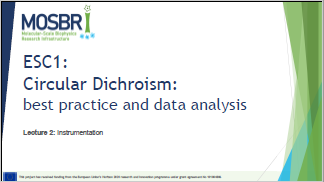
Lecture 3 – Doing it wrong:
what are common mistakes?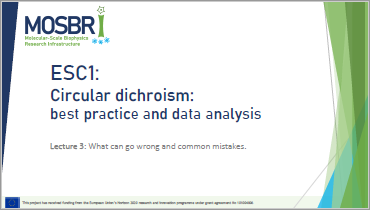
Lecture 4 – Secondary structure calculations.
How to do it and understand the limits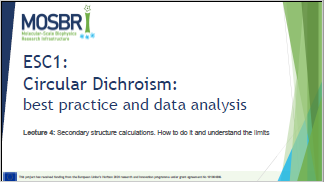
Lecture 5 – The difficult measurement.
What are the limits and how to push them?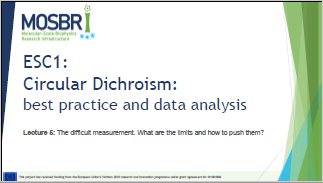
Lecture 6 – Examples of non-protein CD studies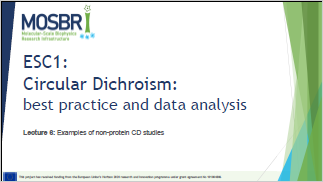
Application to take part in the course
The course is limited to 10 participants and therefore any interested parties will need to submit an application for consideration to take part.
Who is eligible to apply:
Anyone with a workplace/host institution in one of the EU member or associated states may apply to attend this course (this includes people from the UK). Applicants from industry are also welcome. It is expected that the applicant has at least a basic knowledge of molecular biology, chemistry and/or biophysics and that it is applicable to their area of research/work. Applications from scientists in the early-stage of their career are particularly encouraged and we will strive to obtain a gender balance of the participants in the course.
How to apply:
The application consists of:
- submission of a completed course application form which includes:
- motivation for attendance
- a short scientific CV
- if you are a student or postdoc, a reference letter.
Once the application period is closed, all submissions will be reviewed and the applicants will be informed of the outcome.
When to apply:
It is no longer possible to apply for this course. The applications received are under review and applicants will be informed once a decision has been made.
Application deadline:
The deadline for submission of an application to participate in this course is: 27th August 2021.
